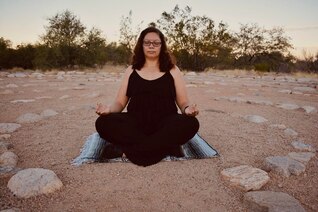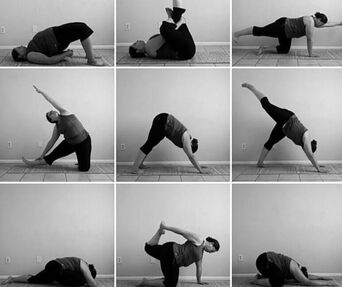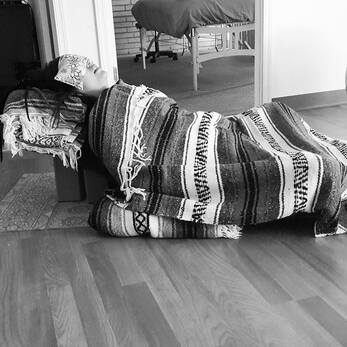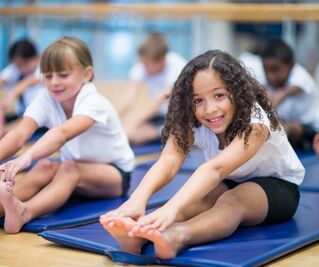Since I was in a restorative pose, I took slow deep breaths and asked my shoulders to release. They did. I continued with my body scan and suddenly I noticed the shoulders rising again. My body was still, but my shoulders were moving. Tensing. Creeping upward.
I remembered a mantra that I came across recently: Stay. Breathe. Observe.
Instead of moving on with my body scan, I decided to stay with the shoulders. They were obviously trying to tell me something. I began to explore the shoulders using my mind's eye.
I loved learning about the shoulders in my anatomy classes. The scapula is an oddly shaped bone that helps form the support structure for the entire upper body. Along with the clavicles and the breast bone, the shoulder blades form a delicate apparatus from which the rest of the body hangs.
The shoulders, though small and light, hold us up every day. They can handle tremendous amounts of pressure, both physical and emotional. I began to explore that concept as I continued to breathe and focus on the shoulders.
Then I remembered that a few days ago I had been upset over a past hurt, and as I tossed and turned in my bed in the middle of the night stewing over what could have been, my neck, shoulders, arms, and chest began to tighten. I could feel anger manifesting in my body.
The next day, I could barely turn my head to either side. My shoulders were hard as rocks. I had a pounding headache, and I was tired. I turned to a massage therapist for relief. She was shocked at how tight my neck and shoulder muscles were. She asked me what I had been doing to cause so much strain in my neck.
I hadn't been doing anything. Worry, anger, and anxiety were the culprits.
It was then I realized how much our internal thoughts and emotions can take a toll on our physical well-being.
I returned my attention to my shoulders in the present moment. I focused on sending the breath to them so that they could be healed and nourished. They began to release.
I continued to stay, breathe, and observe until I could no longer sense any tightness in the shoulders. When my practice was complete, I felt relaxed and rested, and ready to take on the day.




 RSS Feed
RSS Feed